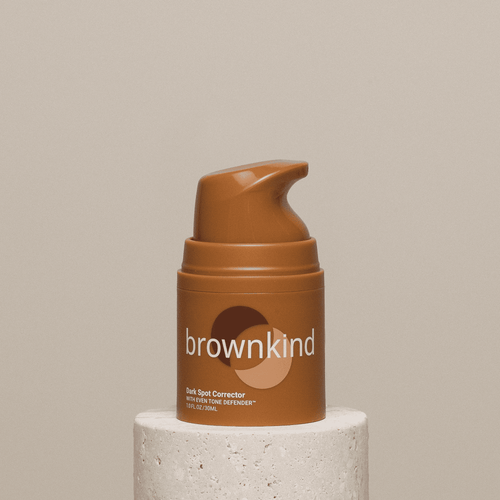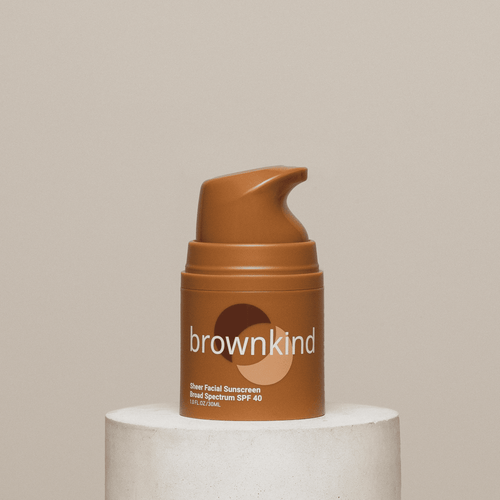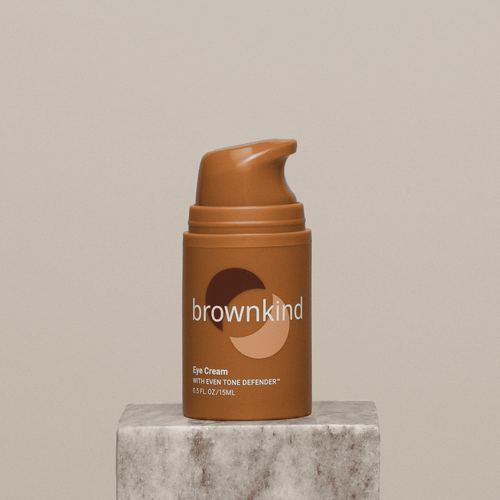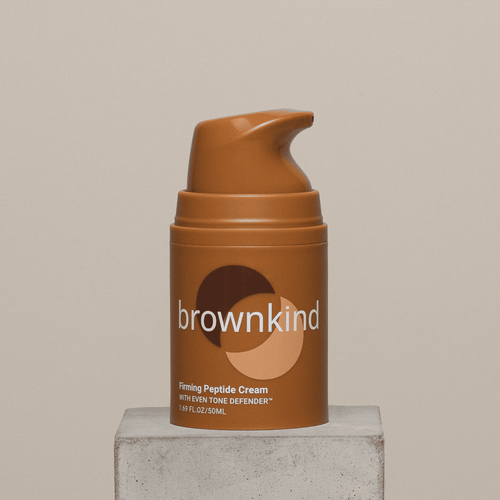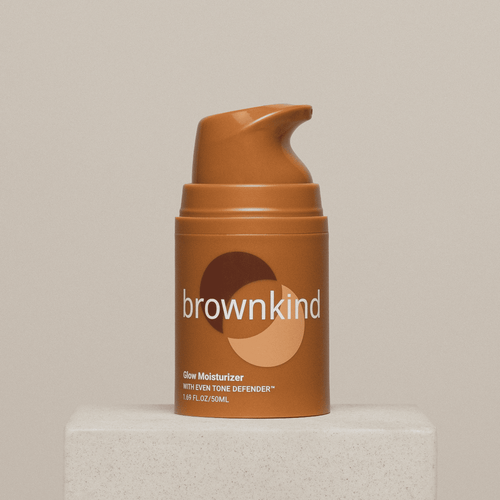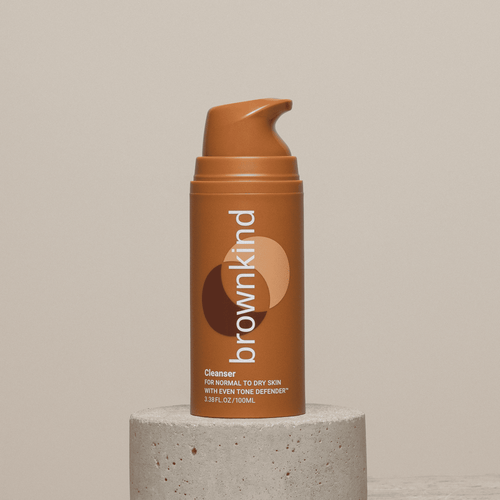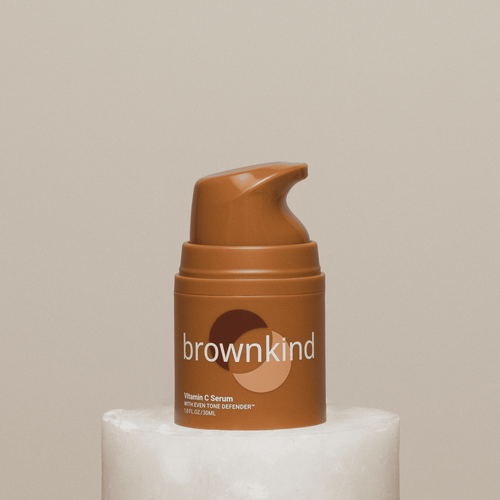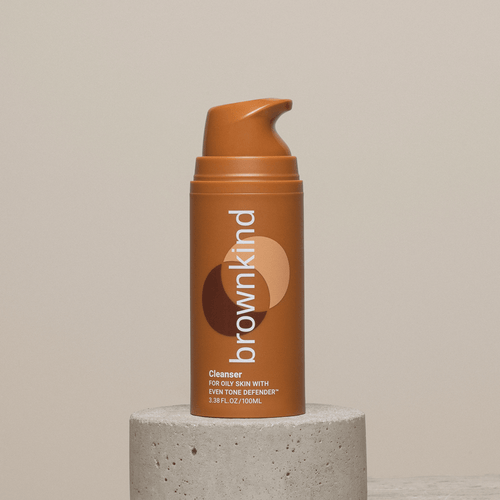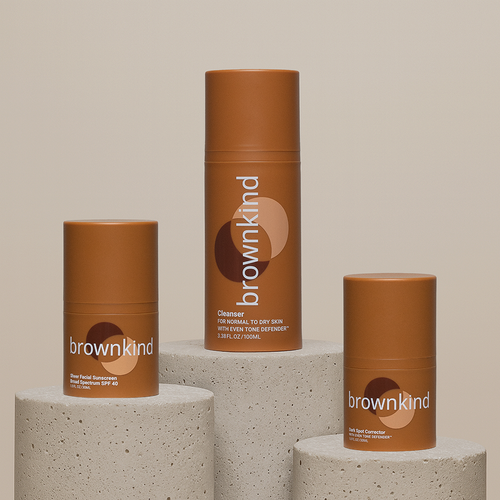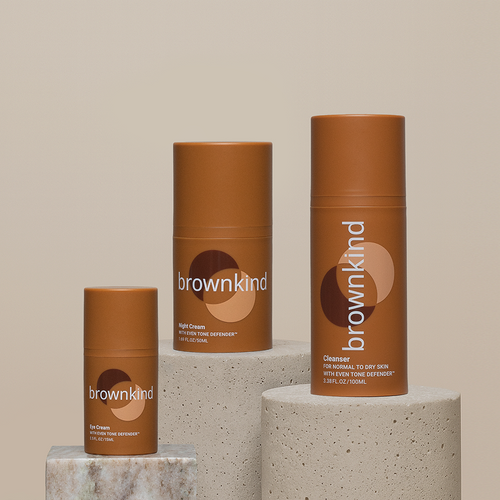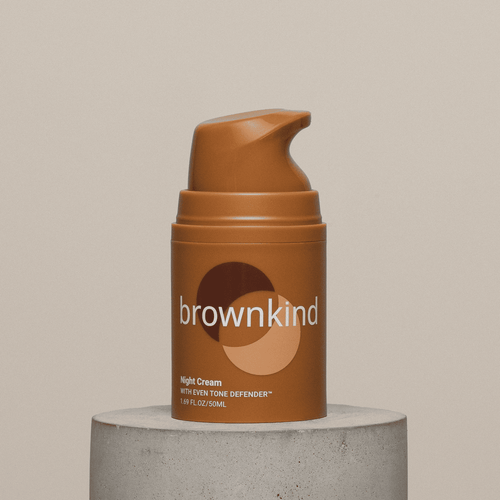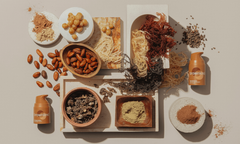Share

Skincare advice is everywhere—but for those with melanin-rich skin, much of it can be misleading, outdated, or even harmful. Whether it’s skipping sunscreen, using DIY remedies, or over-cleansing in pursuit of “clear” skin, these myths can actually undermine your skin’s long-term health and clarity.
Melanin-rich skin is powerful, complex, and unique in how it responds to products, inflammation, and environmental stress. Let’s break down some of the most common skincare misconceptions and replace them with science-backed facts—so you can make informed decisions that actually serve your skin.
Myth 1: Darker Skin Doesn’t Need Sunscreen
False. While melanin offers some natural UV protection, it doesn’t fully shield skin from sun damage.
UV rays still cause:
- Hyperpigmentation
- Uneven tone
- Collagen breakdown and premature photoaging
Melanin can delay visible sunburn, which sometimes makes it harder to detect early UV damage. But beneath the surface, the same risks apply—and often go unnoticed until dark patches, fine lines, or tone shifts appear.
The truth: A broad-spectrum SPF 30 or higher should be worn daily, even when indoors or on cloudy days. Sunscreen doesn’t just protect against future damage—it also prevents current concerns like dark spots from getting worse and helps ensure that treatment products like vitamin C or niacinamide actually work.
Myth 2: The More You Wash Your Face, the Better
False. Over-cleansing can strip the skin of its natural oils, weakening the barrier and actually triggering more oil production as your skin tries to compensate.
This can lead to a cycle of dryness, irritation, and overproduction of oil—especially in melanin-rich skin, where barrier damage can result in inflammation and post-inflammatory pigmentation.
The truth:
- Cleansing twice daily (morning and evening) is enough for most skin types.
- For oily or acne-prone skin, use a cleanser with 1% salicylic acid to help remove excess oil and unclog pores.
- For normal to dry skin, a gentle, non-stripping cleanser helps maintain hydration and barrier health.
Myth 3: Natural DIY Remedies Are Best for Uneven Tone
False. Home remedies like lemon juice, baking soda, or apple cider vinegar are often too harsh and can damage the skin barrier, especially in deeper skin tones.
These ingredients can cause burning, stinging, or micro-inflammation, and on melanin-rich skin, inflammation can trigger long-lasting dark patches known as post-inflammatory hyperpigmentation (PIH).
The truth: Stick with ingredients that are gentle, stable, and dermatologist-recommended, such as:
- Vitamin C – Use at night to support collagen and overall skin clarity.
- Niacinamide – Helps support skin clarity and balance the melanin cycle while strengthening the skin barrier.
- Barrier-supportive moisturizers with ingredients like glycerin, squalane, or saccharide isomerate help prevent the kind of irritation that leads to discoloration.
Myth 4: Hyperpigmentation Will Fade on Its Own
Partially false. Some discoloration may fade over time, especially if caused by a minor breakout or irritation. But without sun protection and supportive products, dark spots can linger for months—or even years.
This is particularly true for melanin-rich skin, where inflammation can trigger an overproduction of melanin in specific areas, leading to stubborn patches or uneven tone.
The truth:
- Addressing hyperpigmentation requires consistency and patience.
- Daily sunscreen is critical—without it, pigment-correcting ingredients are far less effective.
- Treatments like niacinamide and vitamin C (used at night) help support skin tone balance over time when paired with a calm, hydrating routine.
Myth 5: The Stronger the Product, the Faster It Works
False. For melanin-rich skin, aggressive products can cause more harm than good—leading to barrier damage, irritation, and reverse pigmentation.
Using high-concentration actives without professional guidance can backfire. What starts as a desire to fade a dark spot or “even out” your skin can become a cycle of over-treatment and new discoloration.
The truth:
- Start with low to moderate concentrations of actives.
- Introduce new products gradually and monitor how your skin responds.
- Focus on supporting your barrier, especially when using anything with exfoliating or pigment-modulating effects.
Building a Myth-Free Routine That Supports Melanin-Rich Skin
Once you understand how melanin-rich skin functions, building a strong, myth-free skincare routine becomes easier—and more effective.
Here’s a foundation that works:
Cleanse with intention
Choose a cleanser based on your skin type—salicylic acid for oil control, or gentle hydration for dryness.
Moisturize with support
Look for moisturizers with ingredients like glycerin, squalane, and saccharide isomerate that hydrate without clogging or irritating the skin.
Protect every morning with SPF
Sunscreen is your skin’s best long-term investment. Wear it every day—no matter the weather or your location.
Treat with care
If you’re using corrective products for tone balance, keep your routine calm and consistent. Overdoing it can undo your progress.
Stay consistent
Results take time—but they’re lasting when supported by the right care.
Skin Wisdom Over Skin Myths
Melanin-rich skin is strong, but it’s also reactive. That’s why it deserves skincare that’s both gentle and smart—built around clarity, consistency, and care.
The more we break away from harmful myths and quick-fix culture, the more empowered we are to support our skin the way it deserves.
Need help simplifying your routine or navigating which ingredients to use (and which to skip)? We’re here to guide you—because your skin deserves nothing less than the truth.
